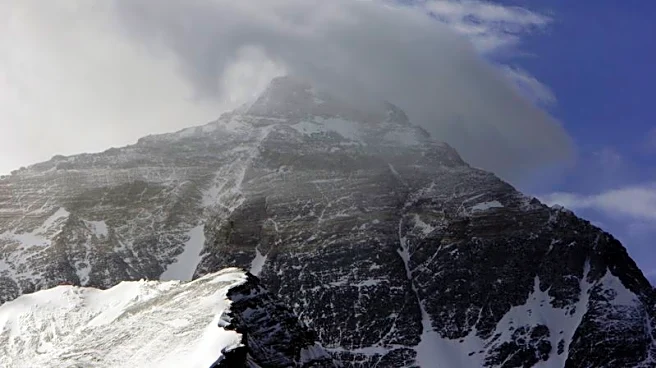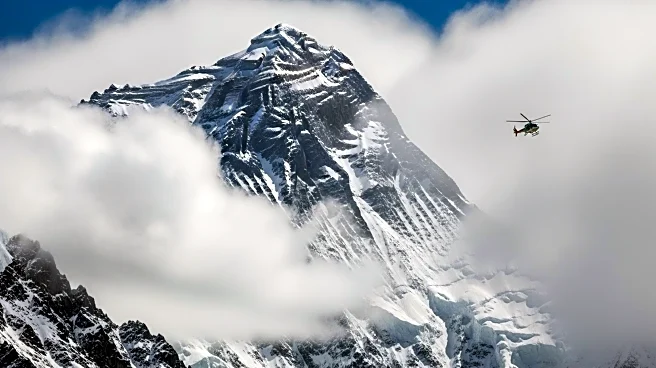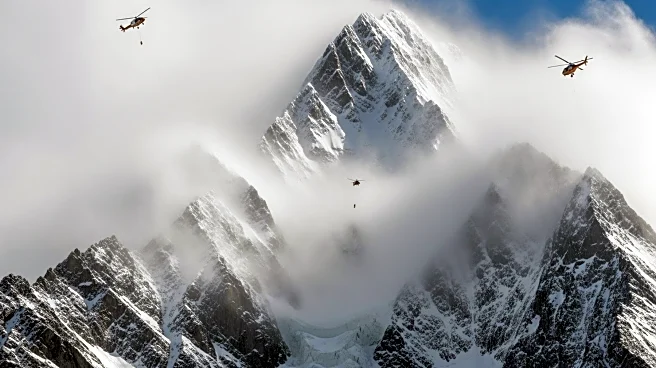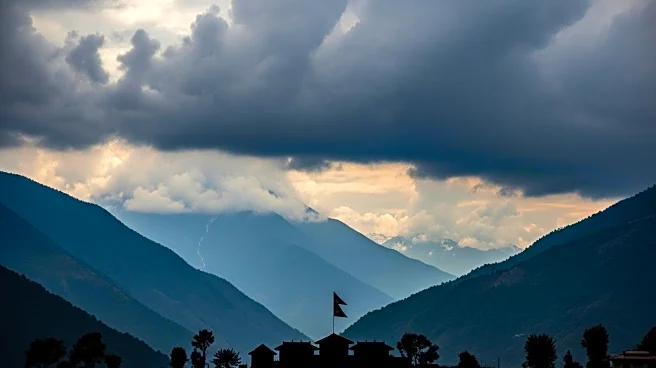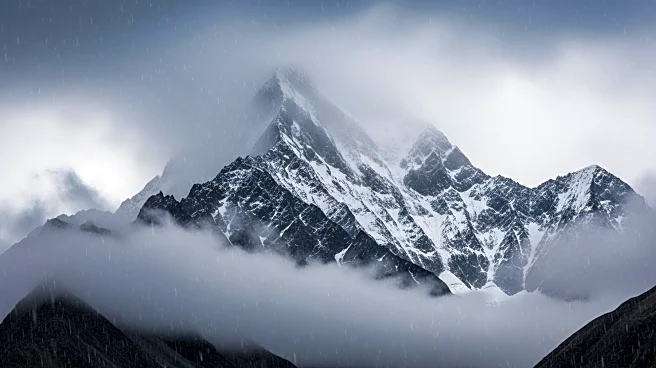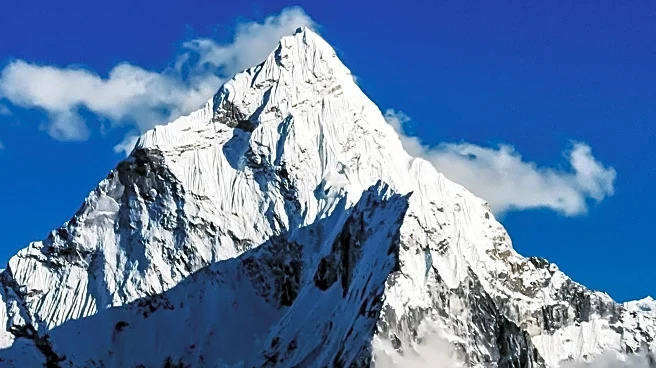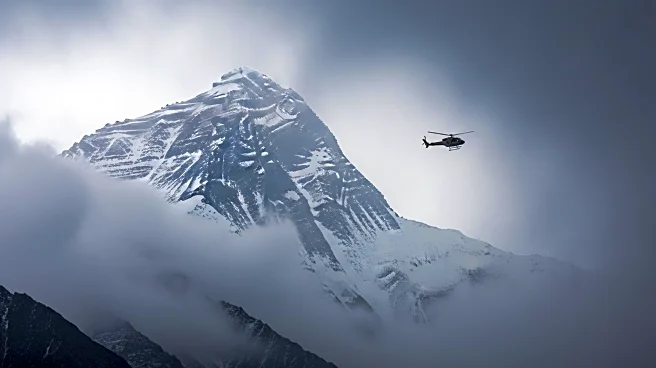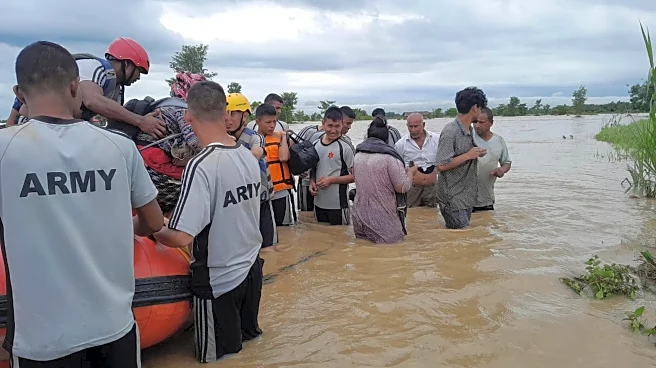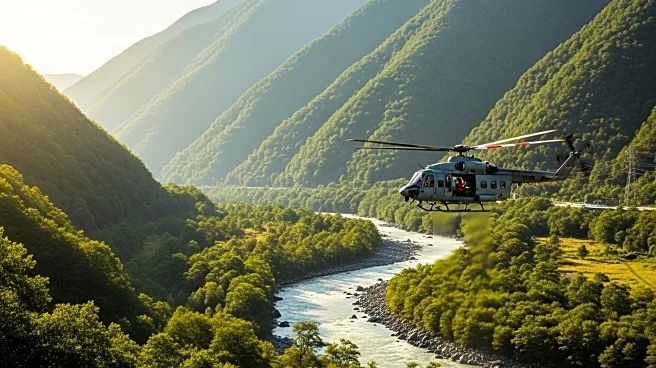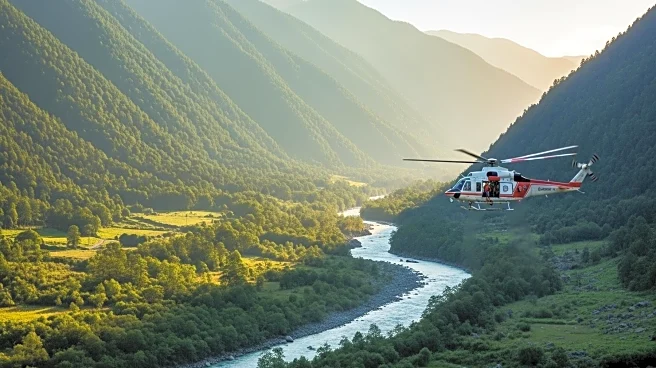What's Happening?
A rare snowstorm has trapped hundreds of trekkers on the Tibetan slopes of Mount Everest during China's Golden Week holiday. The storm, described as the most extreme weather experienced by trekkers, led to continuous snowfall, buried tents, and hypothermia fears. Rescue operations have mobilized locals, guides, and rescue workers to evacuate stranded hikers, with over 350 people led to safety and contact maintained with 200 others. The same weather system has caused heavy rains and flash floods in Nepal and India, resulting in significant casualties and infrastructure damage. Meteorologists attribute the storm to a low-pressure system over the Bay of Bengal, which prolonged the monsoon season.
Why It's Important?
The blizzard underscores the impact of climate change on the Himalayas, with rising snowlines and volatile weather patterns becoming more frequent. The event highlights the challenges of managing tourism on Mount Everest, where overcrowding and environmental concerns are growing. The influx of tourists has led to safety and pollution issues, prompting calls for stricter regulations. The storm also emphasizes the need for better climate resilience and management practices in the region. The broader implications of climate change on Himalayan ecosystems and downstream water resources are significant, affecting millions who rely on these water sources.
What's Next?
Rescue operations continue as authorities work to evacuate remaining stranded trekkers. The event may lead to increased scrutiny of tourism practices on Everest, with potential regulatory reforms to address overcrowding and environmental impact. Nepal is considering a bill to impose stricter requirements on climbers, including higher permit fees and garbage collection levies. The storm may prompt further research into climate change effects on the Himalayas, influencing policy decisions on climate adaptation and disaster preparedness. The tourism industry may need to adapt to changing conditions, balancing economic benefits with environmental stewardship.
Beyond the Headlines
The blizzard highlights the fragile interplay between human activity and the Himalayan environment. The political and informational challenges in managing rescue operations in Tibet under Chinese rule are significant, with restricted access for foreign journalists. The event serves as a reminder of the need for sustainable tourism practices and better early-warning systems to protect both people and the environment. The crisis illustrates the broader impact of climate change on global tourism destinations and the importance of international cooperation in addressing these challenges.

